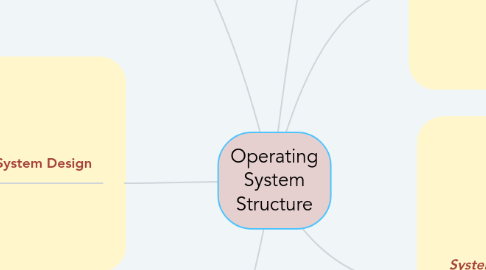Operating System Structure
by Nik Afif


1. Microkernel
1.1. Benefits Of Microkernel
1.1.1. Extensibility : Allows the addition of new services
1.1.2. Flexibility : New features added
1.1.3. Existing : Features can be subtracted
1.1.4. Reliability : Modular design and small microkernel can be tested rigorously
1.1.5. Portability : Changes needed to port system to a new processor is changed in the microkernel
1.2. Small operating system core because it only contains essential core operating system functions
2. Operating System Design
2.1. Goals
2.1.1. User Goals
2.1.1.1. Operating system should be convenient to use, easy to learn, reliable, safe, and fast
2.1.2. System Goals
2.1.2.1. Operating system should be easy to design, implement, and maintain, as well as flexible, reliable, error-free and efficient
2.2. The design of the system will be affected by the choice of hardware and the type of system batch, time shared, single user, multi-user, distributed, real time or general purpose
3. Communication Models
3.1. Messages exchanged between the processes
3.2. Can exchanged information by reading and writing data to the shared region
4. Operating System Services
4.1. User Interface
4.2. Program Execution
4.3. I/O Operation
4.4. File-System Manipulation
4.5. Communications
4.6. Error Detection
5. Layered Approach
5.1. In layered approach, the OS is divided into a number of layers, each built on top of lower layers. The bottom layer is called hardware and the top is called user interface.
5.2. Layers are selected such that each uses functions and services of only lower-level layers
5.3. Advantages : Simplicity of construction and debugging Disadvantages : The careful definition and interaction of the layers - less efficient
6. System Calls
6.1. Type of system calls
6.1.1. Process Control
6.1.2. File Management
6.1.3. Device Management
6.1.4. Information Maintenence
6.1.5. Communication
6.1.6. Protection

